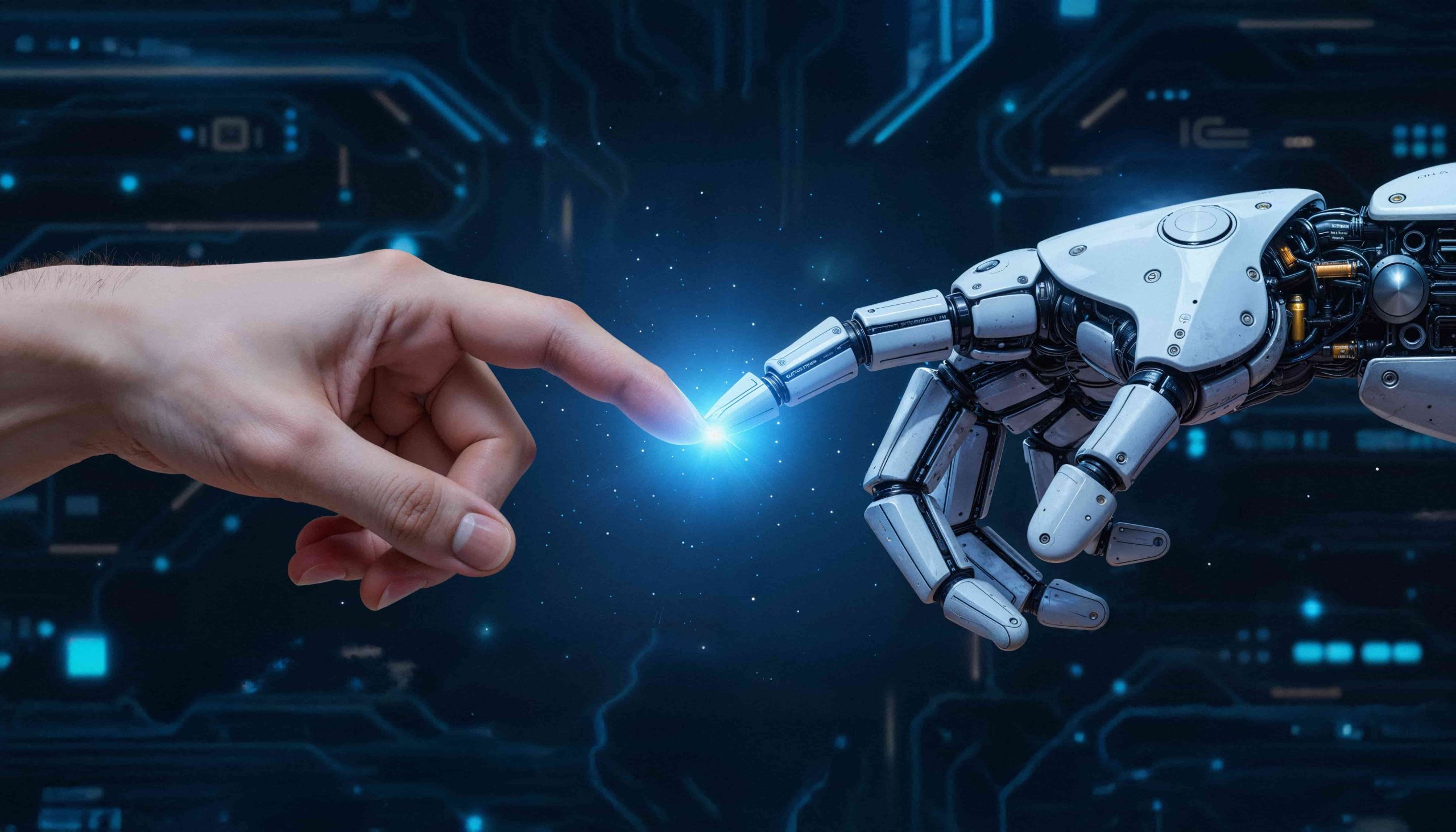
Robotics Simulation Technology in Industry 4.0
Robotics simulation technology is transforming how smart factories operate in the era of Industry 4.0. From cutting development costs to enhancing innovation, this digital approach allows manufacturers to test and optimize robots virtually before implementing them in real-world environments. Let’s explore how this powerful tool is reshaping manufacturing and automation.
What is Robotics Simulation Technology?
Robotics simulation technology involves creating virtual models of robotic systems to mimic real-world scenarios. These simulations help engineers design, test, and refine robots without the need for costly physical prototypes.
By simulating robot behavior and interactions, companies can ensure seamless integration within smart factory environments. This process supports Industry 4.0’s goals of automation, efficiency, and data-driven decision-making.
Why Robotics Simulation Technology Matters in Manufacturing
Robotics simulation technology plays a crucial role in the development and deployment of modern automated systems. Here’s why it’s essential:
-
Cost Efficiency: It eliminates the need for physical prototypes, significantly lowering development expenses.
-
Increased Safety: Virtual environments help detect hazards and prevent accidents.
-
Rapid Testing: Multiple design variations and scenarios can be tested quickly.
Tools like Gazebo and ROS (Robot Operating System) are widely used platforms that facilitate robotic simulation and development in smart manufacturing setups.
How Robotics Simulation Technology Enhances Factory Efficiency
Efficiency lies at the core of Industry 4.0, and robotics simulation technology ensures that production workflows are optimized.
Key Efficiency Gains with Robotics Simulation Technology
-
Error Prevention: Early detection of design and logic errors reduces costly setbacks.
-
Faster Development: Digital testing shortens product launch timelines.
-
Scalability: Companies can simulate and plan large-scale automation without building physical systems.
Automotive companies like BMW and Toyota are using simulation tools like NVIDIA Isaac Sim to fine-tune robotic systems and streamline their manufacturing lines.
Driving Innovation Through Robotics Simulation Technology
Innovation thrives when companies can experiment without fear of failure. Robotics simulation technology offers a safe sandbox to push the limits of what’s possible.
How Robotics Simulation Technology Encourages Innovation
-
Rapid Prototyping: Test radical designs without physical risk.
-
AI Integration: Combine simulations with artificial intelligence for adaptive behavior.
-
Tailored Automation: Design solutions unique to your industry’s needs.
For example, Siemens Tecnomatix enables advanced simulation of production systems and robotic tasks with precision and flexibility, supporting innovative workflows in aerospace and healthcare.
Applications of Robotics Simulation Technology in Smart Factories
Robotics simulation technology supports a wide array of applications within smart factories by aligning with IoT, machine learning, and cloud technologies.
Common Industrial Applications
-
Assembly Lines: Precision control of robotic arms for consistent quality.
-
Logistics and Warehousing: Optimized navigation and task allocation for warehouse robots.
-
Quality Inspection: Automated testing and visual inspection via simulated training.
Companies like Amazon are leaders in leveraging robotic simulations to perfect their warehouse automation systems resulting in faster deliveries and greater accuracy.
Benefits of Robotics Simulation Technology in Industry 4.0
Adopting robotics simulation technology brings numerous advantages to modern factories:
Top Benefits Include:
-
Flexibility: Easily adapt simulations to new product lines or layout changes.
-
Data Collection: Analyze virtual performance data to improve future designs.
-
Sustainability: Cut material waste and reduce carbon footprints.
ABB Robotics leverages simulation to engineer robots that are not only efficient but also environmentally sustainable. Learn more about sustainable manufacturing practices to see how simulation fits into greener production strategies.
Challenges of Adopting Robotics Simulation Technology
While promising, robotics simulation technology comes with challenges that need to be addressed:
-
High Upfront Costs: Licensing, hardware, and training can require significant investment.
-
Learning Curve: Engineers need experience in modeling and software environments.
-
Integration Barriers: Aligning simulated systems with real-world robotics can be complex.
However, platforms like CoppeliaSim offer user-friendly interfaces to reduce these obstacles, making simulation accessible even for smaller businesses.
Future of Robotics Simulation Technology in Industry 4.0
The evolution of robotics simulation technology is shaping the next frontier in smart manufacturing.
Emerging Trends
-
Digital Twins: Real-time replicas of physical robots for live monitoring and control.
-
Cloud-Based Platforms: Accessible simulations from any device, reducing infrastructure costs.
-
AI-Powered Modeling: Predictive analytics to forecast outcomes before implementation.
To learn more about how digital twins are revolutionizing Industry 4.0, read our full Industry 4.0 and Digital Twins in Modern Manufacturing.
Embracing Robotics Simulation Technology
Robotics simulation technology is not just a futuristic concept—it’s an essential part of modern manufacturing. From improving efficiency to encouraging innovation, it enables companies to test, refine, and scale automation like never before.
Ready to implement robotics simulation in your operations? Start with platforms like Gazebo, ROS, or NVIDIA Isaac Sim. For more on digital transformation in smart factories, check out our Robotics Simulation Enhances Software Testing in Automation.
FAQs
What is robotics simulation technology?
It’s the use of virtual environments to design and test robotic systems before real-world deployment.
Why is it important in Industry 4.0?
It enables faster development, reduces costs, improves safety, and supports smarter, connected manufacturing.
Are there tools for beginners?
Yes, tools like CoppeliaSim and cloud-based simulators make it accessible for small teams and startups.
Can simulations reduce environmental impact?
Yes, they help reduce material waste and energy usage by optimizing designs virtually.
How is AI used in robotic simulations?
AI is used to enhance decision-making, allowing robots to adapt and learn within simulations.
Author Profile

- Online Media & PR Strategist
- Hello there! I'm Online Media & PR Strategist at NeticSpace | Passionate Journalist, Blogger, and SEO Specialist
Latest entries
 ColocationNovember 12, 2025Colocation Security Model Implementation
ColocationNovember 12, 2025Colocation Security Model Implementation Artificial InteligenceNovember 7, 2025SAP AI Strategy Enterprise Advances and Developer Tools
Artificial InteligenceNovember 7, 2025SAP AI Strategy Enterprise Advances and Developer Tools Scientific VisualizationOctober 29, 2025Federated Learning Technology in Medical Privacy AI
Scientific VisualizationOctober 29, 2025Federated Learning Technology in Medical Privacy AI Scientific VisualizationOctober 29, 2025Brain Visualization Ethics: Balancing Innovation and Privacy
Scientific VisualizationOctober 29, 2025Brain Visualization Ethics: Balancing Innovation and Privacy

